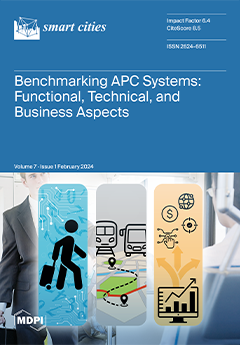Open AccessFeature PaperArticle
The Intersection of the Green and the Smart City: A Data Platform for Health and Well-Being through Nature-Based Solutions
by
Dionysia Kolokotsa, Aikaterini Lilli, Elisavet Tsekeri, Kostas Gobakis, Minas Katsiokalis, Aikaterini Mania, Neil Baldacchino, Sevasti Polychronaki, Niall Buckley, Daniel Micallef, Kurt Calleja, Emma Clarke, Edward Duca, Luka Mali and Adriano Bisello
Cited by 2 | Viewed by 2535
Abstract
An increasingly important aspect of analyzing the challenges facing cities today is the integration of nature. Nature-based solutions have the potential to successfully cope with the adverse effects of extensive urbanization and climatic change. On the other hand, the incorporation of smartness in
[...] Read more.
An increasingly important aspect of analyzing the challenges facing cities today is the integration of nature. Nature-based solutions have the potential to successfully cope with the adverse effects of extensive urbanization and climatic change. On the other hand, the incorporation of smartness in cities is a critical issue. This paper aims to analyze the steps towards integrating nature-based solutions and smart city aspects to develop a web-based data platform that focuses on tackling and investigating the role of nature-based solutions in city health and well-being and returns a digital twin of the natural and built environment, including health-related key performance indicators. Seven pilot cities are used as a basis for the analysis. The architecture of a smart green city data platform is described. The interaction with the citizens is ensured through apps and games. The paper lays the foundation for a future “phygital” NBS world.
Full article
►▼
Show Figures





